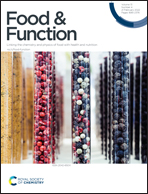S-20, a steroidal saponin from the berries of black nightshade, exerts anti-multidrug resistance activity in K562/ADR cells through autophagic cell death and ERK activation
Abstract
Multidrug resistance (MDR) is a major cause of chemotherapy failure. Adriamycin (ADR) has been widely used to treat cancer, however, as a substrate of the adenosine triphosphate binding cassette (ABC) transporter, it is easy to develop drug resistance during the treatment. Here, we demonstrated that steroidal saponin S-20 isolated from the berries of black nightshade has comparable cytotoxicity in ADR-sensitive and resistant K562 cell lines. Autophagy is generally considered to be a protective mechanism to mediate MDR during treatment. However, we found that S-20-induced cell death in K562/ADR is associated with autophagy. We further explored the underlying mechanisms and found that S-20 induces caspase-dependent apoptosis in ADR-sensitive and resistant K562 cell lines. Most importantly, S-20-induced autophagy activates the ERK pathway and then inhibits the expression of drug resistance protein, which is the main reason to overcome K562/ADR resistance, rather than apoptosis. Taken together, our findings emphasize that S-20 exerts anti-multidrug resistance activity in K562/ADR cells through autophagic cell death and ERK activation, which may be considered as an effective strategy.



 Please wait while we load your content...
Please wait while we load your content...